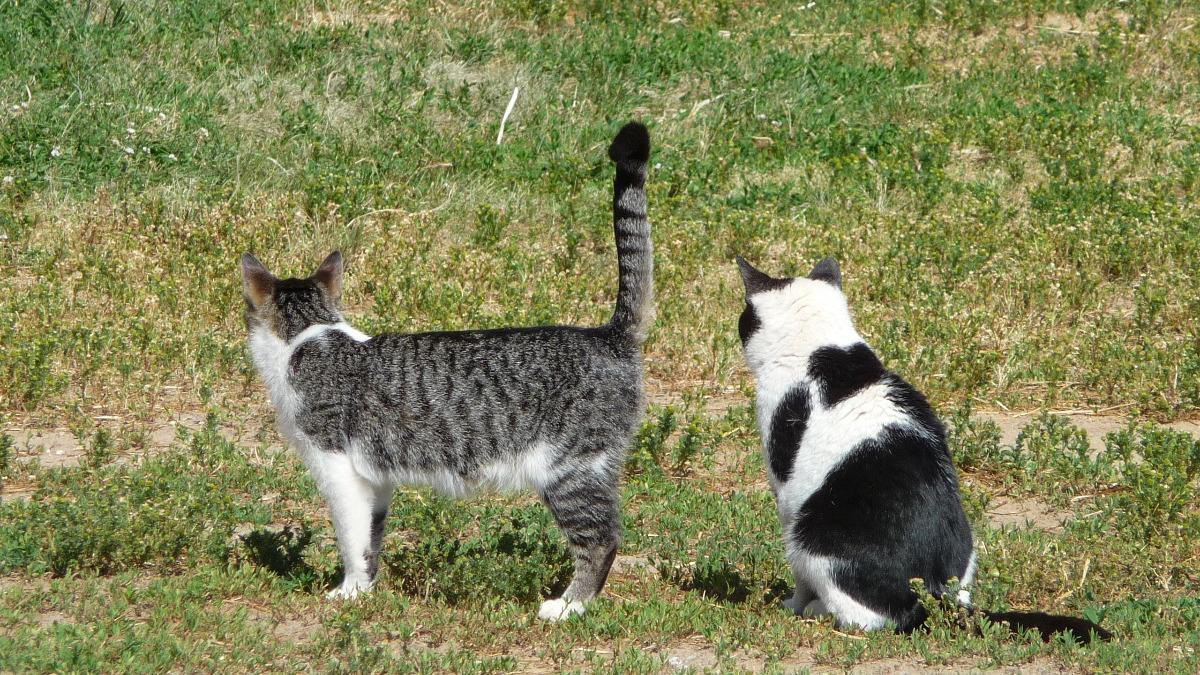Thyroid Disease in Pets

- posted: Feb. 26, 2023
Thyroid Disease in Pets
Cats, dogs and people as well as many other animals have a gland located in the neck called the thyroid gland. The thyroid produces hormones that are responsible for regulating metabolism. These hormones help control heart rate, body temperature, how quickly or slowly the intestines process food and many other functions in the body.
In some cases, the thyroid gland can stop functioning properly leading to over- or under-production of thyroid hormones which lead to issues with metabolism. Cats usually experience issues of overactive thyroid gland or hyperthyroidism. Dogs usually have decreased thyroid hormone production or hypothyroidism. There are cases of cats having hypothyroidism or dogs being hyperthyroid, but these are extremely rare.
Hyperthyroidism in cats is usually caused by a non-cancerous tumor in the thyroid gland. The tumor causes production of excessive amounts of thyroid hormone. In rare cases, a cancerous tumor can be responsible for hyperthyroidism, but more than 97% of cases are benign. With excess hormone circulating in the bloodstream, cats will develop a variety of symptoms the most common of which is weight loss despite the cat having a normal to increased appetite. Hyperthyroid cats will usually also have an increased heart rate and may have diarrhea, vomiting and display anxious or hyper-active behavior. If not properly diagnosed and treated, hyperthyroidism can cause massive muscle wasting and high blood pressure which, in turn, could lead to blindness or heart failure. This condition is more common in cats over the age of seven.
Cats can be cured of hyperthyroidism with an injection of a radioactive isotope known as i131 therapy which targets and destroys only the tumor cells leaving normal cells intact. While this cures the disease, some drawbacks may include higher up-front cost, limited treatment facilities and boarding at the treatment facility for several days due to radioactive waste excreted in the cat’s urine. Hyperthyroidism can also be controlled using a medication called methimazole which stops excessive T4 production, but does not kill the tumor cells. Cats need to remain on the medication for the rest of their lives to achieve control. While tablets are best, methimazole can also be compounded into other forms for ease of administration. There is also a low iodine diet called Y/D (Hill’s Science Diet) that can be used to treat hyperthyroid cats, but, it can be a bit tricky to use in multi-cat households. Surgical removal of the thyroid gland has fallen out of favor due to high incidence of complications.
Dogs have the opposite problem, hypothyroidism, caused by low levels of circulating thyroid hormone. Atrophy of the thyroid gland caused by aging or by destruction of the gland by the patient’s own immune system are the most common causes of hypothyroidism in dogs. Dogs with hypothyroidism are typically middle-aged or older dogs and breeds like Dobermans, Golden Retrievers, Boxers and Dachshunds have a higher incidence of thyroid disease. Symptoms include unexplained weight gain or failure to lose weight, dull, dry skin and hair coat and lethargy or decreased activity. Dogs may also have slow heart rate and mobility issues.
Treatment of hypothyroidism is straightforward: dogs need to take a synthetic thyroid hormone supplement. Thyroid supplements will normalize the thyroid hormone levels and control symptoms of thyroid disease, but do not cure the disease. Medication is needed lifelong.
Diagnosis for either condition is made by a simple blood test to check blood levels, but it is important to screen for other health problems, so, a full blood chemistry panel and complete blood count are usually also performed. In many dogs, T4 levels can be falsely lowered by other illnesses or by certain medications and some breeds (most notably, greyhounds) have T4 levels that are naturally lower than other breeds, so, a hormone called free T4 (hormone not bound to other proteins in the blood) needs to be measured to accurately diagnose hypothyroidism in dogs.
Any dog, especially high-risk breeds, who are obese, lethargic or have chronic skin problems or any cat experiencing unexplained weight loss, chronic diarrhea or other symptoms should be screened for thyroid disease. Treatment can dramatically improve quality of life and most pets will live a normal lifespan with proper therapy.
This blog brought to you by the Patton Veterinary Hospital serving Red Lion, York, and the surrounding communities.
https://veterinarypartner.vin.com/default.aspx?pid=19239&id=4951353
Location
Patton Veterinary Hospital
425 E Broadway
Red Lion, PA 17356
